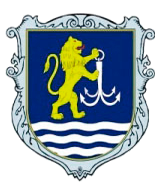PROMISING AREAS FOR COOLING THE CHARGE AIR OF MARINE LOW-SPEED DIESEL ENGINES WITH THE UTILIZATION OF WASTE HEAT
Abstract
Introduction. Structurally, the most simple and reliable in operation is the heatusing cooling system (HUCS) of the ejector-type for supercharged air (EHUCS), in which the function of the compressor is performed by the ejector, and the integration of which into the regular turbocharging system of ship low-speed engines (LSE) does not lead to a noticeable complication of the latter. However, the thermodynamic efficiency of EHUCS (thermal coefficients ζ) is less than that of more complex and bulky, for example, absorption cooling systems (AHUCS). Therefore, if, due to the need to remove a large amount of heat from the supercharged air, caused by insufficiently high ζ EHUCS, the heat exchange surface of the heat-using stages of the air-cooler, and, accordingly, their aerodynamic resistances turn out to be significant, it will be necessary to use thermodynamically more efficient HUCS, for example, AHUCS or an intermediate stage of cooling air with seawater. It is also possible to use additional sources of heat, in particular exhaust gases or engine cooling water, the removal of heat from which is not related to the placement of heat exchange units in the air or gas exhaust tracts and, therefore, does not lead to an additional increase in aerodynamic resistance. On the basis of the above premises, the HUCS of supercharged air of ship LSEs was developed and analyzed. Purpose: the use of low-boiling working bodies (LBB) in HUCS allows to cool the water of the intermediate water circuit of supercharged air cooling to low temperatures, close to 0ºС, and without the need to maintain a vacuum in the evaporator of LBB-water coolers. Results: a three-stage, three-circuit supercharged air cooling system is proposed, in which the presence of an intermediate stage of supercharged air cooling with water (regular air-cooler) allows to compensate for the deficit of high potential heat of air for EHUCS and, accordingly, cooling capacity, and therefore leads to a reduction of the surface of the air-cooler, primarily its economizer (tail, in the direction of the air) section, respectively, and the aerodynamic resistance, which is Р < 3000 Pa, that is, less than 1 % of the supercharged air pressure Рк . Conclusions: the presence of an intermediate degree of cooling of supercharged air with seawater makes the three-stage three-circuit cooling system practically independent of the temperature of the seawater, and in terms of the efficiency (depth) of air cooling it exceeds the two-stage three-circuit cooling system.





